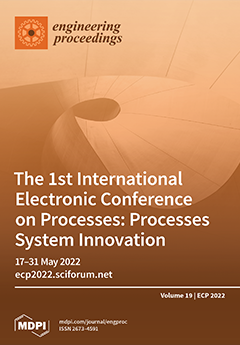Eng. Proc., 2022, ECP 2022
The 1st International Electronic Conference on Processes: Processes System Innovation
Online | 17–31 May 2022
Volume Editors:
Andrey Yaroslavtsev, Russian Academy of Sciences, Russia
Blaž Likozar, National Institute of Chemistry, Slovenia
Dariusz Dziki, University of Life Sciences in Lublin, Poland
Ioannis Spanopoulos, University of South Florida, USA
Antoni Sánchez, Autonomous University of Barcelona, Spain
Giancarlo Cravotto, University of Turin, Italy
Vicenç Puig, Technical University of Catalonia, Spain
Hoon Kim, Sunchon National University, Republic of Korea
Maela Manzoli, University of Turin, Italy
- Issues are regarded as officially published after their release is announced to the table of contents alert mailing list.
- You may sign up for e-mail alerts to receive table of contents of newly released issues.
- PDF is the official format for papers published in both, html and pdf forms. To view the papers in pdf format, click on the "PDF Full-text" link, and use the free Adobe Reader to open them.




